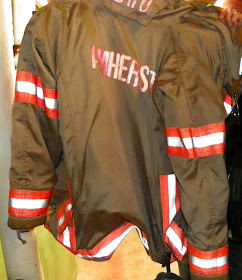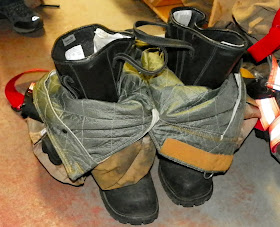Firefighter/paramedic Steve Gaughan (President local union 1764) demos Lucas
In a beauty contest for expensive new tools the Amherst Fire Department is at a bit of a disadvantage. Turn out gear that resembles those heavy duty raincoats and clunky boots Mom made you wear to school on overcast days, or simple robotic machines that mimic a high-speed oil derrick with almost as loud a noise, aren't very sexy.
But, they are lifesavers.
And yes, maybe the department is looking out for its own by ranking $40,000 worth of "protective gear" as their #1 priority. But when that's the only thing potentially separating you from fire's kiss of death, protective gear is worth way more than its weight in platinum.
Department requests for the upcoming Fiscal Year total $211,000 with the largest amount, $70,000, going toward five Lucas CPR compression devices, one for each ambulance. The machines are far more efficient than even a trained person and they never tire during a long transport.
They also free up one person on a heart attack incident run who can stay back at the station for other emergency calls. The devices are already in use in surrounding communities and with Amherst's graying population, will certainly see plenty of use.
The Lucas Machine in action
Also heart related, the department needs to finish paying for defibrillators ($50,000) that went into service two years ago.
Obviously our highly-trained department require routine certifications such as "Advanced Class Life Support," which costs $8,250 every two years. But if the department had their own 'Laerdal Mega Code Kelly Patient Simulator' they could do training in house, during on-duty down time (which is getting harder and harder to find). The two requested lifelike mannequins cost a total of $22,000.
Mannequin down!
Yes, saving lives isn't always cost effective -- but the alternative is more than we can bear.





Let's hope Dwight doesn't get his hands on Lucas: http://www.youtube.com/watch?v=_Wk0MVG-cN4
ReplyDelete